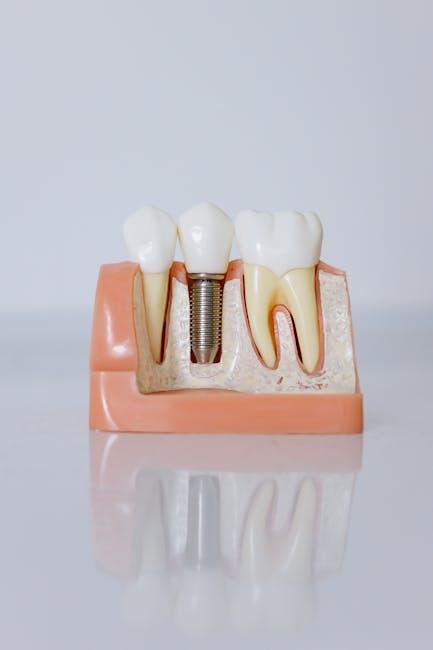
P.E.I. Dental Association Still Concerned About Canada’s Expanded Dental Care Plan
By PNI Atlantic News | Updated June 2024
Introduction
Canada’s expanded dental care plan, launched as a landmark public health initiative, aims to provide increased affordable dental services for vulnerable populations. While this federal expansion promises greater access to dental care—especially for low-income families, seniors, and indigenous communities—the P.E.I. Dental Association remains cautiously concerned about how these changes will impact dental care providers and patients across Prince Edward Island.
In this article, we take a deep dive into the concerns raised by the P.E.I. Dental Association, explore the national dental care plan’s key aspects, and provide practical insights for residents and healthcare professionals navigating this evolving landscape.
Overview of Canada’s Expanded Dental Care Plan
Canada’s federally funded dental care plan seeks to bridge the gap in access to oral healthcare, aiming to help over 6 million Canadians. Here are some of the key elements:
- Targeted coverage for children under 12, seniors, low-income families, and Indigenous peoples.
- Annual limits on dental benefits, including routine check-ups, restorative care, and emergency services.
- Coordination with provincial dental programs to ensure seamless care delivery.
While the program represents a major stride toward universal dental care, provinces and professional organizations, such as the P.E.I. Dental Association, have voiced concerns that warrant careful consideration.
P.E.I. Dental Association’s Primary Concerns
The P.E.I. Dental Association has highlighted several ongoing issues related to the expanded dental care plan:
1. Funding and Reimbursement Rates
Dentists in Prince Edward Island are concerned the government’s reimbursement rates may not fully cover the cost of providing comprehensive care. This disparity could discourage providers from participating in the program, limiting patient access.
2. Administrative Burdens
The expanded plan involves increased paperwork and reporting requirements. Many dental offices are worried that these administrative challenges could reduce appointment availability or increase operational costs.
3. Access and Provider Participation
Although more Canadians will be eligible for dental services, a shortage of dentists willing to treat publicly insured patients persists. This may lead to longer wait times and geographic disparities in care.
4. Quality of Care
There is apprehension that pressure to contain costs within the expanded plan might lead to compromises in the quality or extent of dental treatments offered to patients covered by the program.
Implications for Dental Patients in P.E.I.
Residents of Prince Edward Island stand to benefit from enhanced dental coverage, but they should also be aware of potential challenges:
- Eligibility: Know whether you qualify under the new plan — this typically includes children under 12, low-income families, seniors, and Indigenous peoples.
- Provider Availability: Some dentists might limit the number of publicly insured patients they treat, so scheduling an appointment early is advisable.
- Understanding Covered Services: Basic preventive and emergency dental services are covered; however, cosmetic or elective procedures may not be included.
- Cost Sharing: While many services are free or subsidized, some treatments could require co-payments.
Table: Comparison of Dental Coverage Before and After Expansion
| Dental Care Aspect | Pre-Expansion | Post-Expansion |
|---|---|---|
| Eligible Groups | Limited to select low-income groups | Children under 12, seniors, low-income families, Indigenous peoples |
| Annual Benefit Cap | Varied by province, generally lower | Up to $650 – $1000 per eligible person |
| Covered Treatments | Mostly emergency services and basic care | Routine check-ups, fillings, extractions, emergencies |
| Dental Provider Participation | Voluntary; often limited | Increased but concerns remain over reimbursement rates |
Benefits of the Expanded Dental Care Plan
Despite concerns, the Canadian expanded dental care plan brings several undeniable benefits:
- Improved Oral Health: Early access to dental care helps prevent more serious problems down the road.
- Reduced Financial Barriers: Families with limited income can access necessary dental treatments without crippling costs.
- Enhanced Health Equity: Priority groups, including Indigenous communities, receive more equitable care access.
- Better Overall Health: Oral health improvements contribute to general wellbeing and chronic disease prevention.
Practical Tips for Dental Care Users in P.E.I.
If you plan to utilize the expanded dental care benefits in Prince Edward Island, consider these practical tips to make the most out of the program:
- Confirm Eligibility Early: Check the latest government resources and speak with your dental provider.
- Book Appointments in Advance: Popular dental offices may fill quickly due to increased demand.
- Ask About Covered Services: Clarify with your dentist to avoid unexpected costs.
- Maintain Routine Preventive Care: Regular cleanings and check-ups help avoid costly treatments later.
- Stay Informed: Dental benefit policies can evolve, so keep updated through P.E.I. health department websites.
First-Hand Experiences from P.E.I. Dentists
Local dental professionals have shared their viewpoints on how the expanded plan impacts their practices:
“While we welcome the intent to improve access, the current reimbursement model often leaves us financially strained, making it challenging to dedicate full resources to publicly insured patients,” said Dr. Megan Thompson, a family dentist in Charlottetown.
“Administrative paperwork has increased significantly. We’ve had to hire additional staff just to handle claims and reporting, which affects our ability to see more patients,” noted Dr. Jamal Singh, a dental clinic owner in Summerside.
Looking Forward: Potential Solutions and Pathways
The P.E.I. Dental Association and provincial authorities are collaboratively exploring solutions to address these challenges and strengthen the expanded dental care program’s effectiveness:
- Negotiating Reimbursement Adjustments: Advocating for fairer compensation aligned with care costs.
- Simplifying Administrative Processes: Implementing user-friendly claim systems to reduce paperwork.
- Encouraging Provider Participation: Incentive programs for dentists serving public patients.
- Public Education Campaigns: Informing communities about benefits, eligibility, and how to access care.
Conclusion
Canada’s expansion of dental care promises groundbreaking improvements in access for millions, including residents of Prince Edward Island. However, as emphasized by the P.E.I. Dental Association, significant concerns remain around funding adequacy, administrative demands, and equitable provider participation. Addressing these issues collaboratively between government, dental professionals, and communities is crucial to realizing the plan’s full potential.
For P.E.I. residents, staying informed and proactive about dental coverage eligibility and care options remains essential. With ongoing dialogue and adjustments, the expanded dental care plan can become a cornerstone of healthier smiles across the province.


